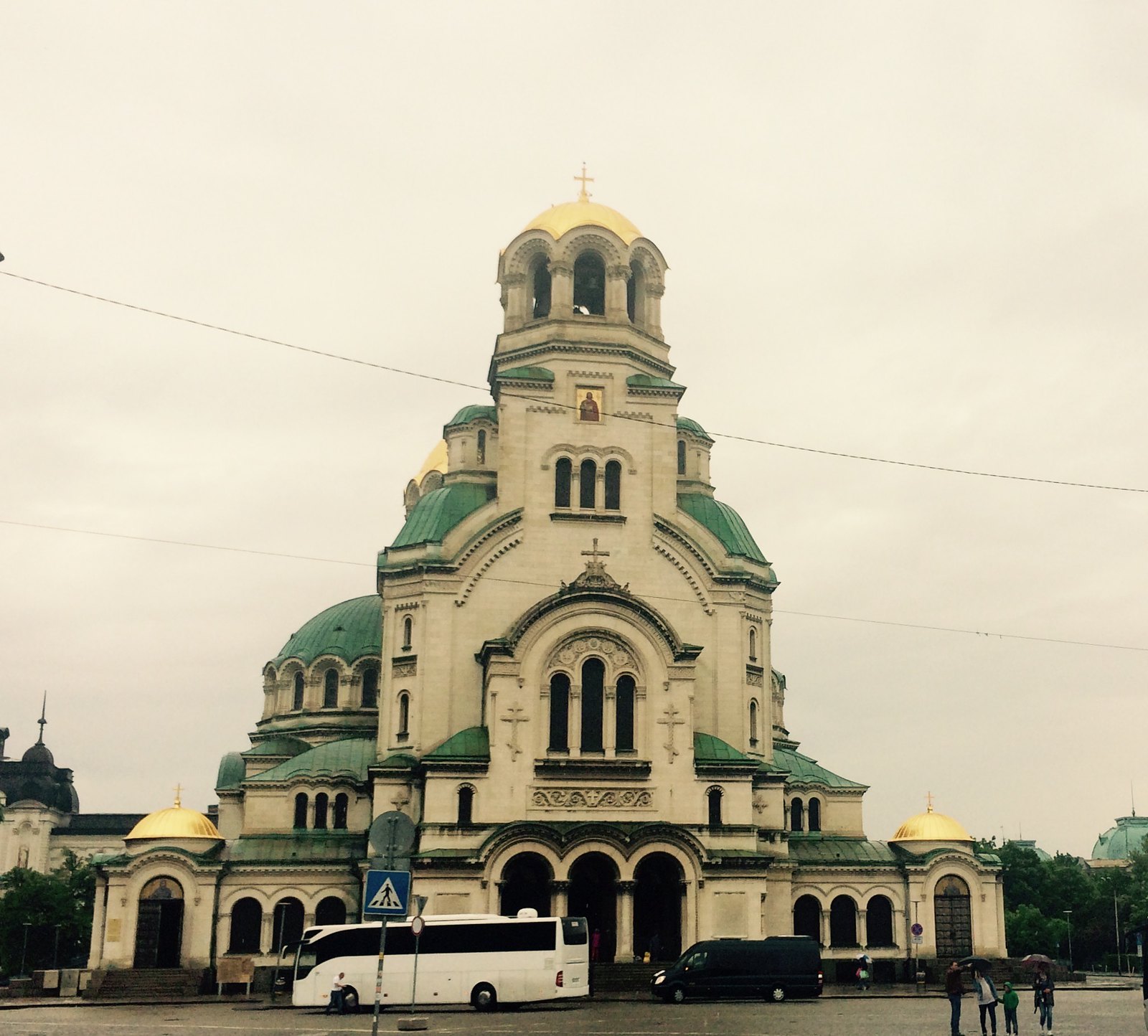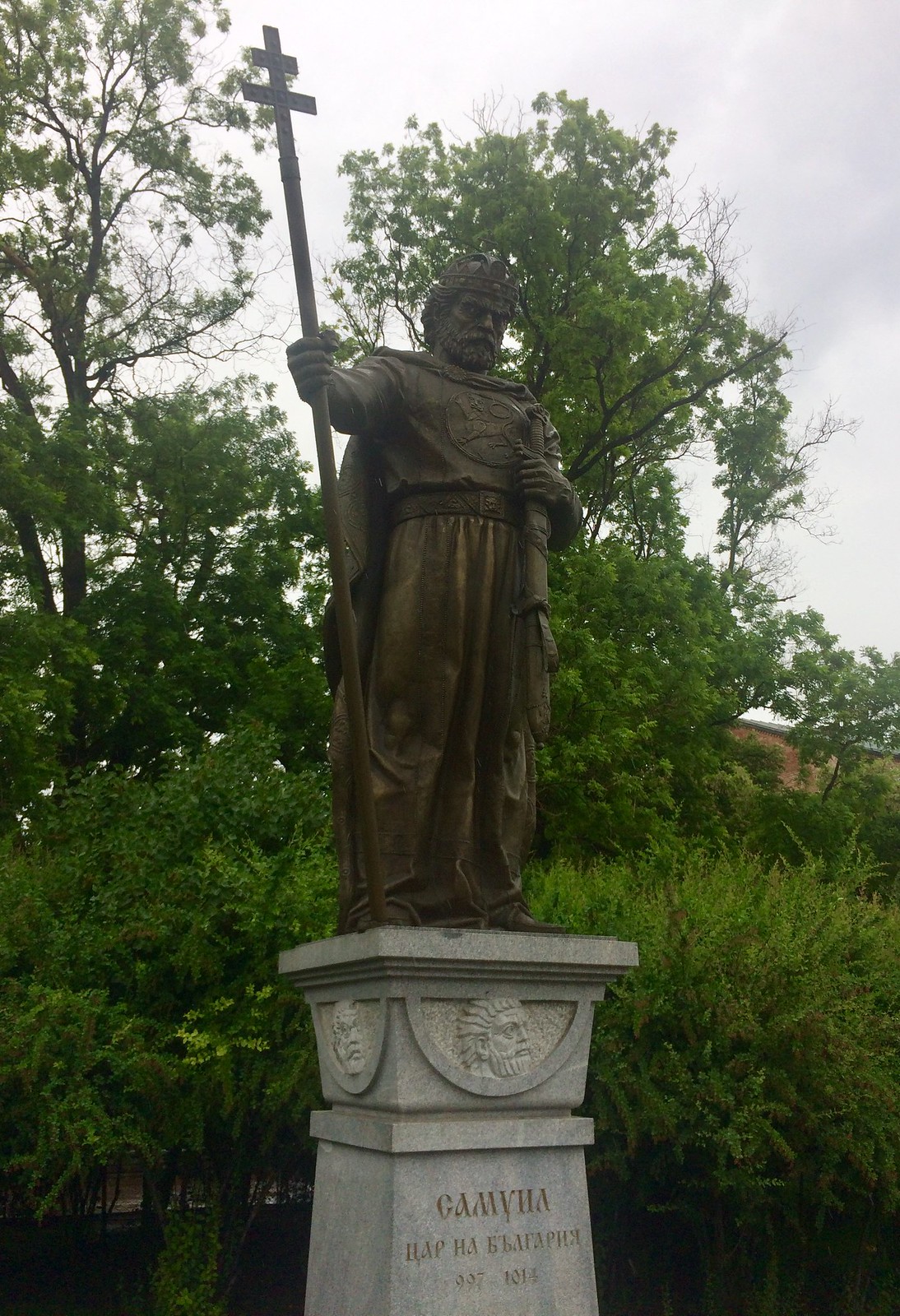Bulgaria, Saturday-Sunday May 20-21 2017, Day 0 & 1
Bulgaria and Macedonia
This is the first in a series of journals chronicling the trip I took with my Ma to Bulgaria and Macedonia. They are lovely countries and I recommend them to anyone looking for wonderful food and rich history off the beaten path.
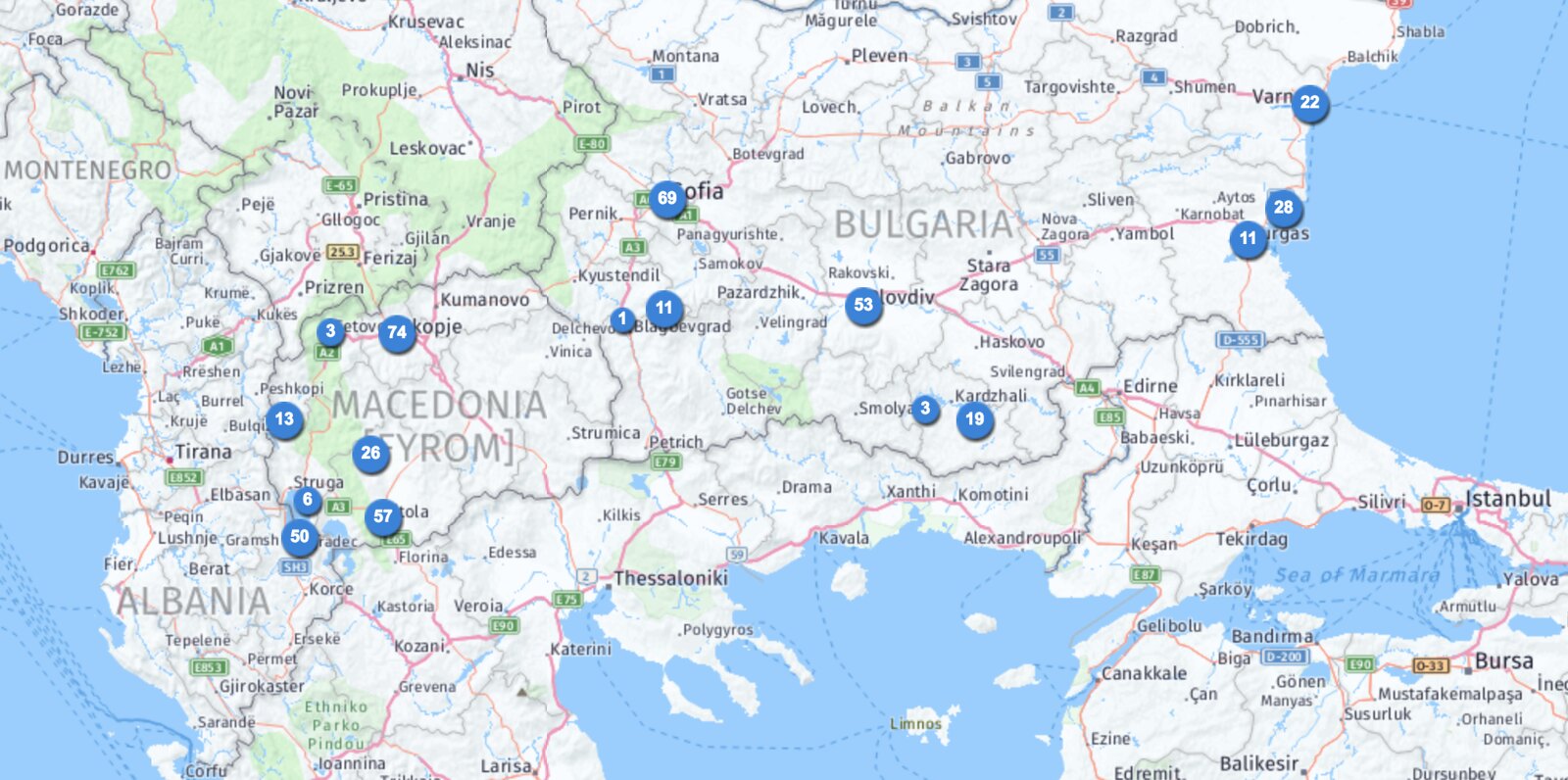 Map of May 2017 Trip to Bulgaria and Macedonia
Map of May 2017 Trip to Bulgaria and Macedonia
Group:
Guides are Slaviša Raković, Yelena Djokovich (second cousin of the tennis player), Maria Krumova. In Macedonia, Yelena and Maria left, Zdenka Nikolovska and Demetr joined). Alumni we met were Shebe, Victoria, Victoria and Gabby, Emir x and x,
Don, Audrey, Bob H, Marina, Sudha and Raj, Sarel and Philip, Bob S and Sabrina, Carol, Mary. Most are volunteers for American Councils.
American Councils
State department contracts with American Councils, an NGO. They run exchange programs that take top students from the former communist countries and send them to American high schools for a year. The volunteers review and grade the applications -- need experience reading them to judge the right fit. My mom has been volunteer since 2004.
Alumni we met were uniformly extraordinary people, and all cited their exchange program as transformative experience. Went to colleges like Georgetown, Princeton, American University in Abu Dhabi, Aberdeen, Cambridge.
Most students sent to fairly rural places, which they loved (I was surprised): no distractions meant they got the pure American experience. All reported that the American high schools were much easier than Bulgarian high schools, even given language difference. High proficiency in English necessary. English is a mandatory subject across Europe.
Volunteers can take two kinds of trips. I took an insider tour, where participants pay the expenses and it's guided by professional guides+American Councils staff+alumni. Other are the retrieval trips, where volunteer goes to a program country to chaperone students coming to US. American Councils pays for your ticket and one day of lodging; but you're encouraged to come earlier, and local office helps you coordinate independently exploring the country.
Sarel has taken insider tours to Kosovo and Ukraine; Georgia; Serbia, Bosnia, Montenegro, Croatia; plus pickup trips to Armenia (and one from Belarus that she met in Frankfurt)
Bulgaria, Friday-Saturday May 20 2017, Day -1&0
Left Austin 6am Friday. Landed 9am Saturday. Turkish Airlines has really good food. Grabbed an aisle seat with nobody in center, napped on and off on the flight. Got to hotel, slept, orientation, slept.
Sunday May 21 2017, Day 1
History of Bulgaria
Bulgaria is composed of three main ethnic groups: Bulghurs, Slavs, Thracians
- Middle Stone Age 10,000-7000 BC
- Stone tools
- Stone-Copper age 5000s-4000s BCE Varna culture , first civilization with a sophisticated social hierarchy in Europe. The centerpiece archaological find for this culture is the Varna Necropolis, discovered in the early 1970s; gold bracelets scepters and other artifacts created between 4,600 and 4200 BC: the oldest gold artifacts yet discovered anywhere in the world
- Advanced stone tools, Ceramic pots and relics
- Varna cemetery found 1976 dated to 5000s BC three graves including oldest known wrought gold
- Grave of 35yo king with golden scepter, large gold armbands, buttons from a cloak. Also copper and stone axes
- Amount of gold in this one grave as much as total gold found anywhere from this same period
- Shells from Mediterranean -- there was trade
- We have found necropolis but not the corresponding city
- Copper came from the SW Black Sea coat and from east Thrace. Varna was metallurgical center for the East Balkan Peninsula
- Most pots found in graves were smaller shoddier symbolic replicas of pots used in household. Rich graves had full sized pots with thin walls and high aesthetic standard
- Bronze Age 3200-1200 BC
- Thracian identity forms.
- floods came at end of Copper age; lack of continuity of people into Bronze Age
- Big carved tombstones with shape of a person in relief
- Large funerary urns, one with Swastika. Then a tumulus (menhir) erected; high status person could reach 5-10m. Deified deceased predecessorsl
- Early Iron Age 1200-500
- Varna (then called Odessos) was major population center for western Black Sea coast
- Trade with Greece and across Black Sea
- Classical 580-323
- Hellenistic 323-15
- Wine trade as far as Rhodes, Georgia, Crimea.
- Roman 15-200 CE
- fountains, heating system (thermae) for baths, aqueduct
- Elaborate relief marble tombstones
- Grave of a doctor priest: scalpels, tweezers, hooks
- Gravestone with the Horse-Man ("Heros") figure that later developed into St George imagery
- Rings with impossibly small marble figures carved imto
- Late Roman 200-330
- In later Roman times, Varna becomes part of lower Moecia; from Nessebar down to Byzantium and west to Sofia (Serdica) is Thracia
- Dice, silver bronze and glass items
- Became an important Christian center
- First Christian community established 1st c AD by St Andrew the Apostle.
- In 311 Constantine and Licinius issued edict of tolerance for Christians, basilicas appeared in following years
- Late Antiquity 330-650
- not destroyed in downfall of empire but suffered as economy crumbled
- Remained the only large sea port in lower Moesia
- The "evacuation" from Dacia in 3d century when Roman Empire abandoned in face of Goth
- Slavs came from Carpathians and from near Berlin first looting of Illyrians in 611 century
- Settled, mixed with Illyrians, Arromanian (latin-speaking) people
- Resulting peoples will retain Bulghurs name but Slavic language and identity.
- First Bulgarian Empire 681-1018 CE
- Byzantine rule 1018-1187
- Second Kingdom 1187-1396
- Ottoman Rule 1396-1878 Bulgaria's "Dark Age"
- 1878-1943 Third Bulgarian Kingdom
- 1945 Communism
- After fall of communism Bulgaria has lost a million people due to emigration and low birth rate
Breakfast and lunch
Breakfast is scrambled eggs, sausage, feta, tomatoes, steamed mushrooms Banitsa thin flaky rolled pastry with cheese Nearly every lunch or dinner preceded by a cucumber tomato feta salad.
Lunch at restaurant with 360 view of Sofia
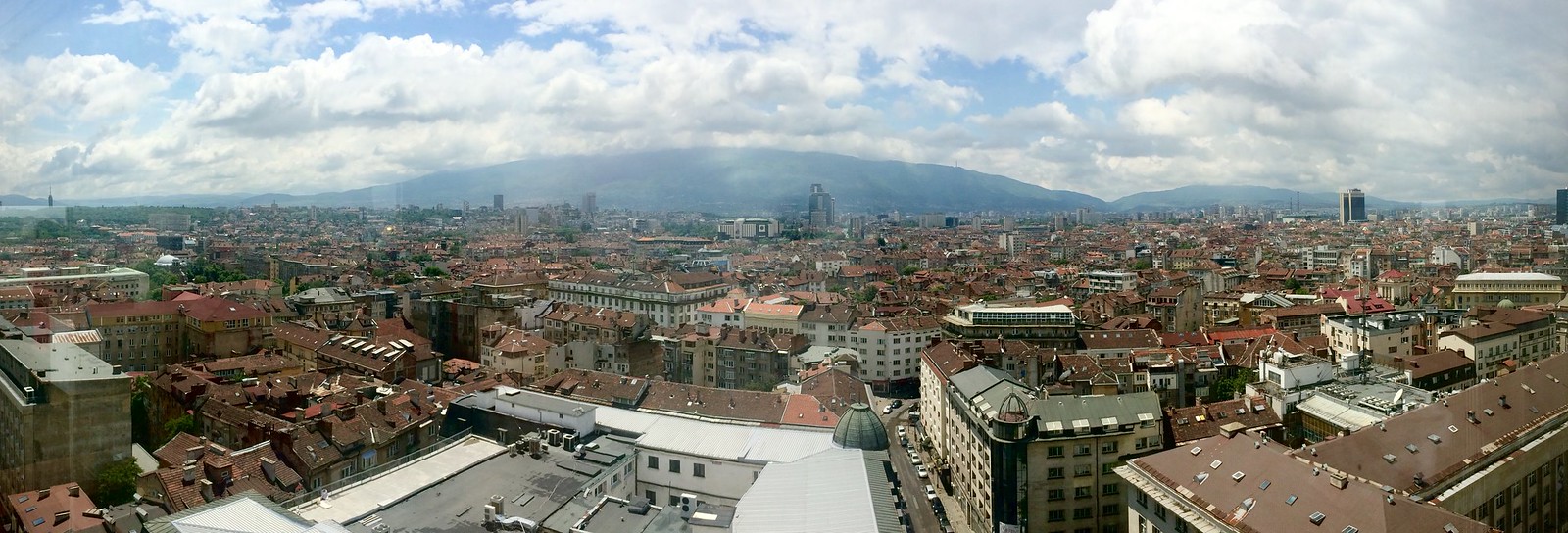 201705 - Balkans - View from Lunch of Sofia - 16 of 101 - Sofia - Oborishte - Sofia, May 21, 2017
201705 - Balkans - View from Lunch of Sofia - 16 of 101 - Sofia - Oborishte - Sofia, May 21, 2017
Alexander Nevski Cathedral
Central church in Bulgaria
King Samuel (Самуил) statue
Apex and eventual Nadir of the Bulgarian people. Conquered large parts of Serbia, Macedonia, empire touched three seas (Black, Aegean, Mediterranean). Moved capital to Skopje from Sofia. Got his ass whipped by Ottomans in Battle of Kleidion. Basil II, the "Bulghur Killer", blinded the 14,000 surrendering soldiers -- leaving one in a hundred with one eye to lead the others back and be an economic burden on country. Samuel had a heart attack when soldiers returned.
Graffiti Tour of Sofia
A lot of sanctioned graffiti all around Sofia (and a ton of unsanctioned graffiti), including the electrical boxes.
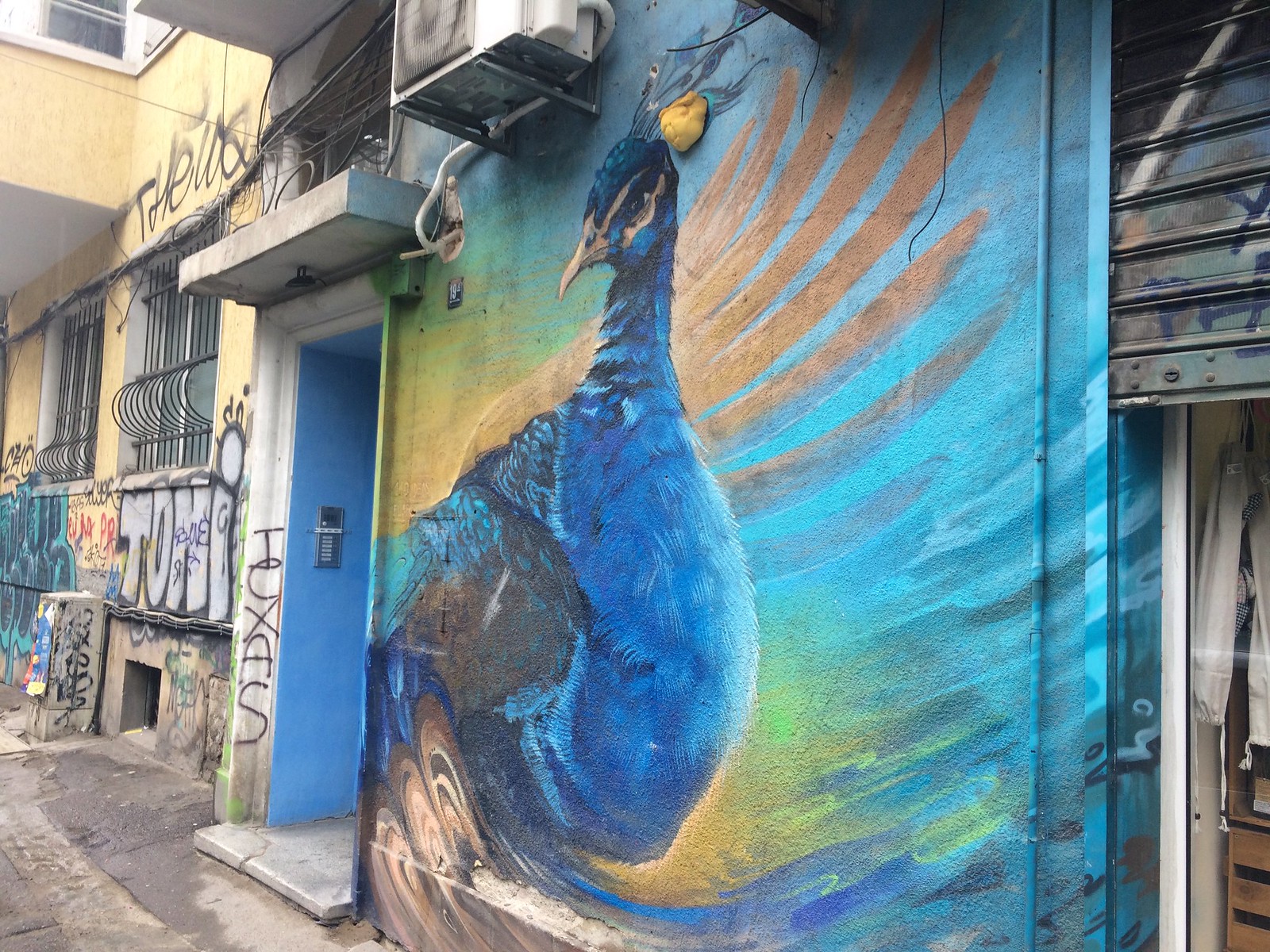 201705 - Balkans - Peacock Graffiti - Sofia - Oborishte - Sofia, May 21, 2017
201705 - Balkans - Peacock Graffiti - Sofia - Oborishte - Sofia, May 21, 2017
 201705 - Balkans - Full Parking Lot Graffiti - Sofia - Oborishte - Sofia, May 21, 2017
201705 - Balkans - Full Parking Lot Graffiti - Sofia - Oborishte - Sofia, May 21, 2017
 201705 - Balkans - Falcon Graffiti - Sofia - Oborishte - Sofia, May 21, 2017
201705 - Balkans - Falcon Graffiti - Sofia - Oborishte - Sofia, May 21, 2017
 201705 - Balkans - Sad Man Graffiti - 11 of 46 - Sofia - Oborishte - Sofia, May 21, 2017
201705 - Balkans - Sad Man Graffiti - 11 of 46 - Sofia - Oborishte - Sofia, May 21, 2017
Ivan Vazov (Иван Вазов) Theater
Ivan Vazov is Bulgarias national poet. Statue of him, theater named for him
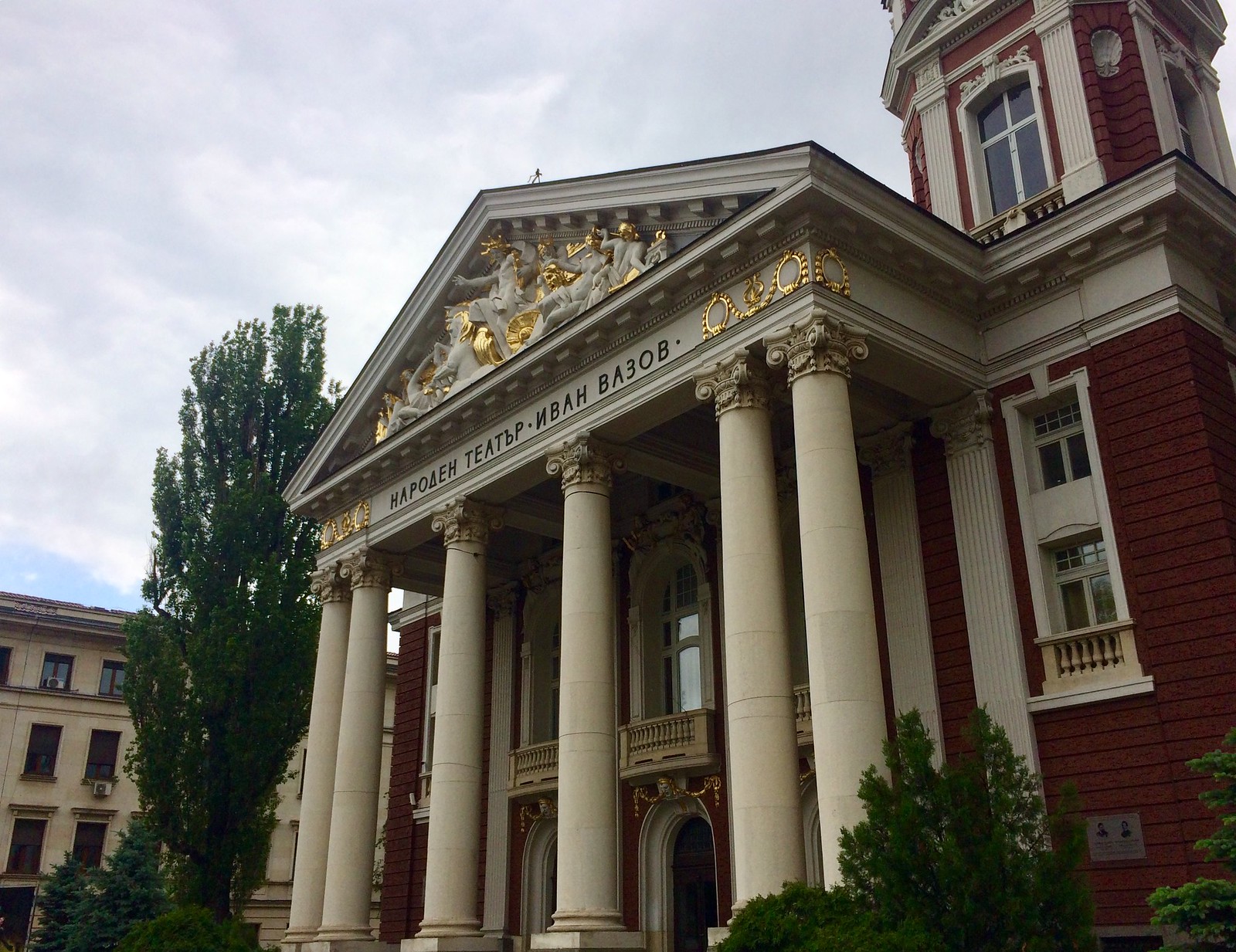 201705 - Balkans - Theater Ivan Vasov - 8 of 40 - Sofia - Oborishte - Sofia, May 21, 2017
201705 - Balkans - Theater Ivan Vasov - 8 of 40 - Sofia - Oborishte - Sofia, May 21, 2017
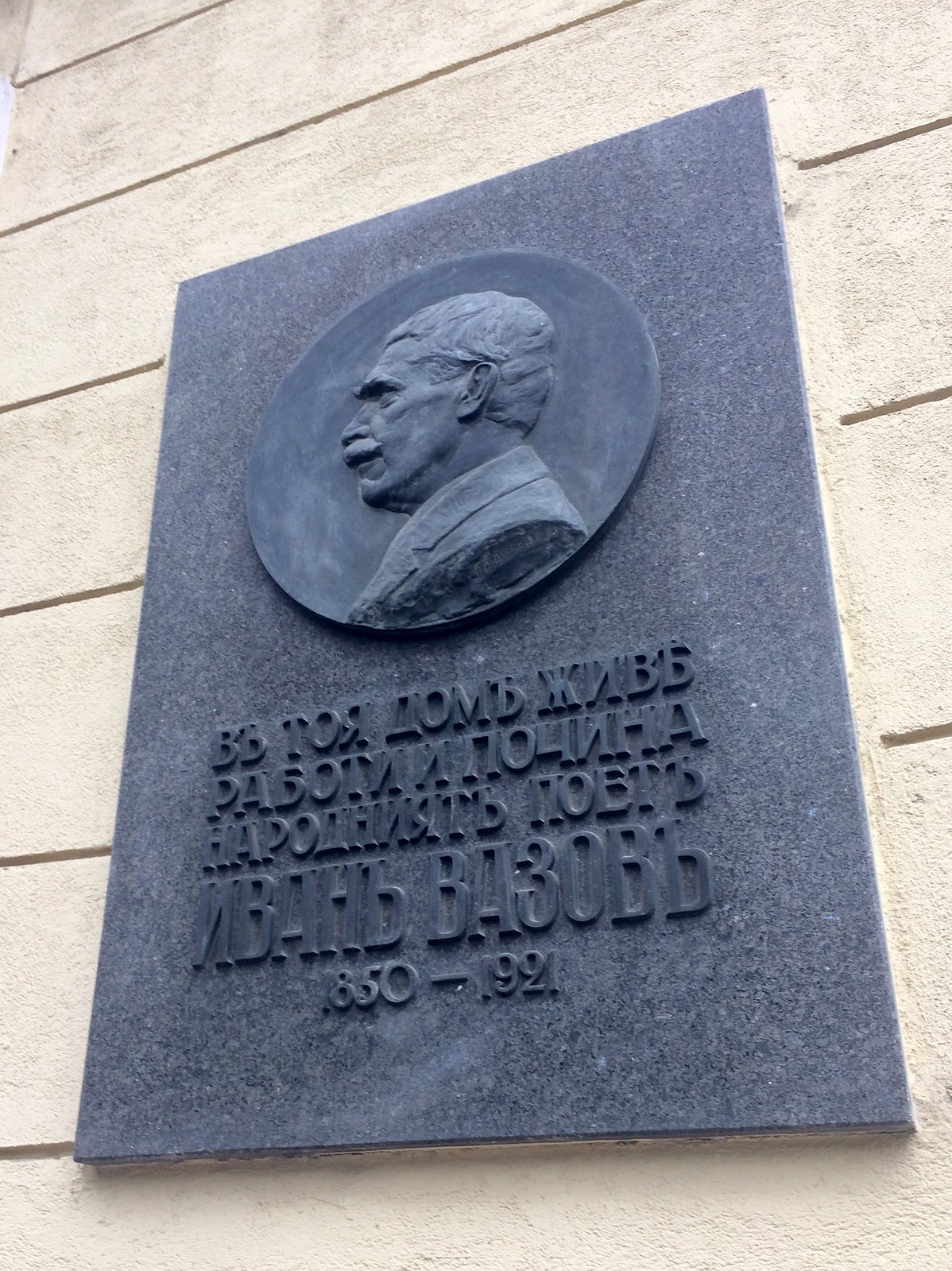 201705 - Balkans - Ivan Vasov Placque - 4 of 66 - Sofia - Oborishte - Sofia, May 21, 2017
201705 - Balkans - Ivan Vasov Placque - 4 of 66 - Sofia - Oborishte - Sofia, May 21, 2017
Dinner high above Sofia
Amazing rustic restaurant Folk dancers in the aisles
Nestinarstovo
At one point all go outside where people to walking on red hot coals, licking glowing brand. Nestinar is the dancer.
Rose Oil
Rose Oil is a major and identifying export of Bulgaria. Roses grow everywhere, they put rose oil in soaps, perfumes, anything that sells

